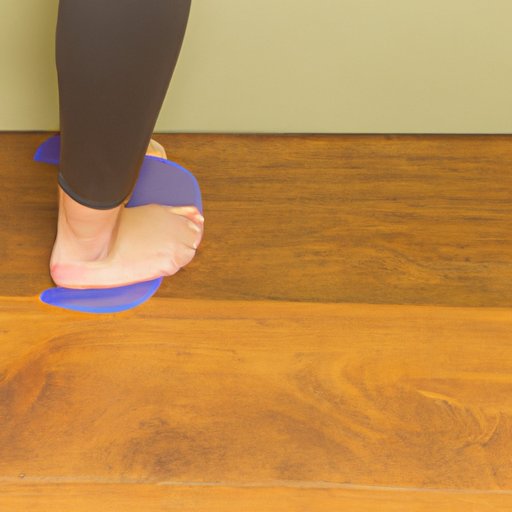
Introduction
Flat feet is a condition where the arches of one or both feet have fallen, causing the foot to be flatter on the ground than usual. Some people are born with flat feet, while others develop them later in life due to injury, age, or weight gain. Symptoms of flat feet include pain in the feet, ankles, knees, hips, or lower back, as well as tiredness and swelling in the feet or ankles.
The purpose of this article is to help readers understand more about flat feet and if and how they can be fixed. We will dive into the latest research on treatment methods, prevention strategies, and resources for those living with flat feet.
The Truth About Flat Feet: Can They Be Fixed?
One commonly held belief is that flat feet are unfixable, but this is not entirely true. While it may depend on the individual case, many people have found success in treating and correcting their flat feet over time.
We spoke with several podiatrists and physical therapists who shared their thoughts on whether flat feet can be fixed and possible treatments for flat feet. They all agreed that there are ways to improve flat feet, including exercises, orthotics, and lifestyle changes.
5 Exercises to Strengthen Flat Feet and Alleviate Pain
Exercise is a powerful way to improve flat feet and alleviate pain associated with this condition. Here are five exercises that can help strengthen flat feet:
- Toe Raises: Lift your toes while keeping your heels on the ground and hold for a few seconds before releasing. Repeat 10-15 times.
- Arch Raises: While sitting, wrap a towel around the ball of your foot and pull towards you while raising your foot. Hold for a few seconds before releasing. Repeat 10-15 times.
- Heel Cord Stretch: Stand on a raised surface with your heels hanging off and lower your heels down until you feel a stretch. Hold for 10-15 seconds and repeat 5-10 times.
- Foot Golf: Place a small ball on the ground and use your feet to guide it through cones or around obstacles. This will help improve balance and strengthen the foot muscles.
- Barefoot Walking: Walking barefoot on a variety of surfaces such as sand, grass, or gravel can help strengthen the foot muscles and improve overall foot health.
It is important to consult with a medical professional before starting any new exercise routine.
Custom Orthotics vs. At-Home Remedies: Which is Right for Your Flat Feet?
Custom orthotics and at-home remedies are two treatment options for flat feet, each with their pros and cons. Custom orthotics are made to fit the individual’s foot and can provide support and alignment for the feet, ankles, and knees. The downside is that they can be costly and require a consultation with a specialist.
At-home remedies such as wearing supportive shoes, performing the aforementioned exercises, and managing weight can be affordable and accessible options for those looking to improve their flat feet. However, they may not provide the same level of support and correction as custom orthotics.
We asked medical professionals and patients about their thoughts and experiences with each treatment option. Some found success with custom orthotics while others preferred at-home remedies. It is important to discuss these options with a medical professional to determine what is best for your individual case.
The Long-Term Effects of Flat Feet on Your Body, and How to Prevent Them
Untreated flat feet can lead to several potential health concerns, including an increased risk of knee and hip pain, back issues, and poor posture. However, there are ways to prevent these problems from occurring:
- Exercise and stretching routines: We’ve already discussed exercises that can strengthen the feet, but regular stretching and low-impact exercise such as swimming or biking can also help improve overall foot and joint health.
- Proper shoe selection: Wearing shoes with arch support and cushioning can help prevent pain and discomfort associated with flat feet.
- Regular check-ups with a medical professional: Consulting with a podiatrist or physical therapist on a regular basis can help identify and address any potential issues or imbalances before they become major concerns.
Living with Flat Feet: Coping Mechanisms and Support Systems
To better understand the experiences of people living with flat feet, we turned to personal essays and interviews. Many reported managing discomfort with things like ice, massage, and over-the-counter pain medications. Others found comfort in connecting with others facing the same condition, through online forums or support groups.
Overall, it is essential to find coping mechanisms and support systems that work best for you. Living with flat feet can be challenging, but there is comfort in knowing there are resources and communities out there to help.
Conclusion
Flat feet can be a painful and uncomfortable condition, but it is important to know that there are ways to improve and correct them. Exercises, treatments, and preventative measures can all play a role in promoting better foot and joint health. We encourage readers to speak with a medical professional if they are experiencing chronic pain or discomfort. By taking the necessary steps to care for your flat feet, you can improve your overall health and quality of life.




